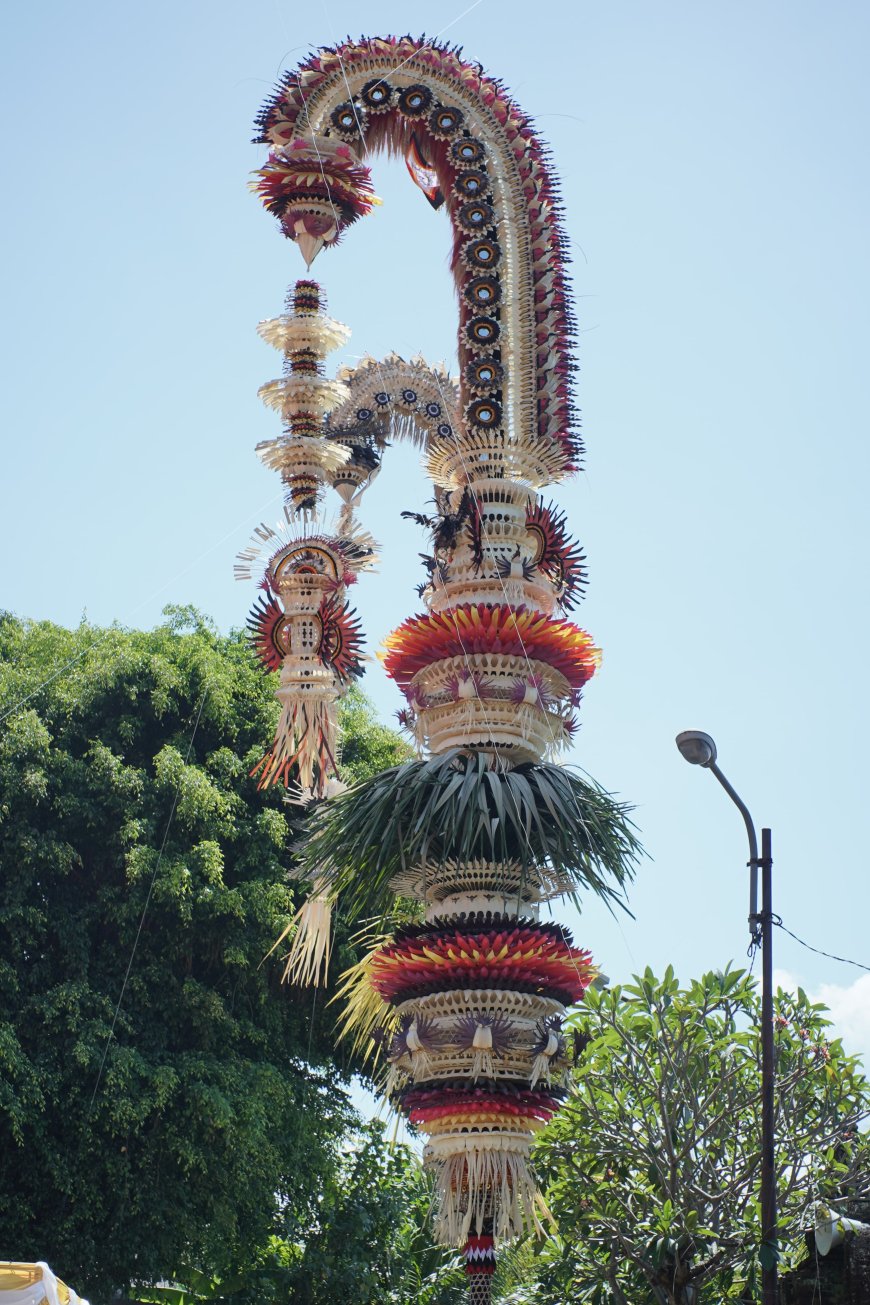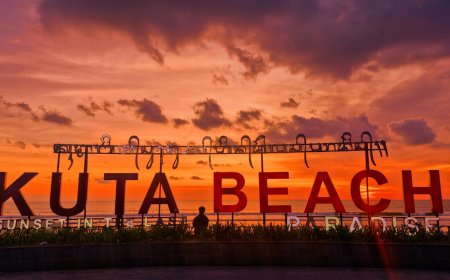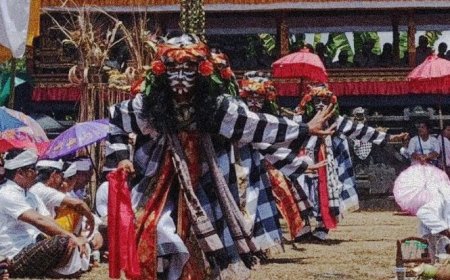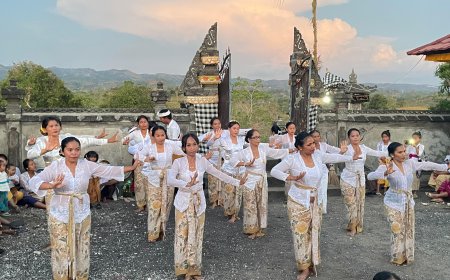Original Tradition Since 1937, "Ngerebong"
This unique tradition is called Ngerebong, a tradition that existed in 1937 and is generally carried out by Balinese people, especially people in Kesiman Village, East Denpasar, Bali. This tradition is usually carried out at Petilan Temple, Kesiman, East Denpasar. This tradition is said to be unique because the sacred ceremony is believed to involve the gathering of the gods at that time and this tradition is usually carried out 8 days after Kuningan Day.

There are so many unique traditions in Bali, one of which is the Ngerebong Tradition. Ngerebong itself is a tradition that has existed since 1937. This tradition is generally carried out by the Balinese people, especially the people in Kesiman Village, East Denpasar, Bali. Ngerebong itself comes from the Balinese language which means "gathering". This ngerebong tradition is a sacal ceremony and is an attraction for tourists to see it. It is not uncommon for foreign tourists, even those who live in Bali, but not from Kesiman Village, to visit and even participate in this festive and sacred tradition.
Ngerebong itself is a Bhuta Yadnya or pecaruan ceremony, so this tradition is aimed at reminding Hindus of their sedharma through sacred media. In practice, ngerebong itself is believed to be the gathering of the gods at that time. This ritual or tradition is carried out to maintain harmonious relations between humans and God, between humans and humans, and humans and their natural environment or what is usually called Tri Hita Karana.
Ngerebong itself is a very unique ceremony because it is not a Piodalan ceremony (birthday commemoration) and does not use many complete ceremonies as a complement to the ceremony. This tradition is carried out at Petilan Temple, which is located in the Kesiman area. The thing that is a unique icon in this tradition is that before this tradition began, there were rows of beautiful, majestic and luxurious penjors in front of Petilan Kesiman Temple. Apart from that, before this tradition started there were already several treats such as traditional music and flowers in beautiful jars. It's just sometimes due to crowding during the installation of the penjor in this ceremony it requires pecalang to close the road because people and tourists are crowding the area.
This ngerebong tradition has been carried out since 1937 during the reign of King Kesiman. This ngerebong procession is carried out at Redite Pon Medangsia since morning and the tabuh rah ceremony is carried out. The aim is to awaken the guna rajah to be somiated or harmonized so that it obeys the direction of the guna sattwam. In this way, the meaning of the guna rajah becomes positive, giving the spirit to be strong in facing the various upheavals of life. This tradition is identically carried out 8 days after Kuningan Day.
The center for implementing this ngerebong tradition is at Pura Agung Petilan, Kesiman, Denpasar. Pura Agung Petilan itself is a spiritual place for the ngerebong ceremony. Etymologically, Pura Agung Petilan comes from the word "Tila" which in Sansekerta means "seed" and the abbreviation "pa -an", so it means a place to sow seeds or concepts owned by a king or leader.

Ngerebong Tradition (Source : Personal Collection)
According to one of the figures and cultural figures of Kesiman Village, namely I Gede Anom Ranuara, Ngerebong is a pangilen held at the Agung Petilan Temple to create balance in the world. This tradition has been established since 1937, but has been implemented with a smaller capacity in the Royal area or Puri Kesiman.
This Ngerebong begins with the Nyanjan and Nuwur ceremonies. The purpose of this ceremony is to ask for the holy power of Bhatara-Bhatari to descend through his base from the congregation, from the panca, and prasanak pangerob. Next, all the visiting Barong and Rangda as well as the pepatihs left Kori Agung, continuing to circle Wantilan in the prasawia manner three times. To go around in the Prasawian way is to move from east to north, to the west, to the south and back to the east. Continue like this for three rounds.
When carrying out prasawia, the pepatihs do ngunying or what ngurek uses is a sharp keris which actually doesn't hurt the pepatihs' chests in the slightest. When the prasawia event is finished, everyone returns to Gedong Agung with the Pengeluwuran ceremony and those in trance return to normal.
After the Pangeluwuran ceremony, followed by the Maider Bhuwana Bhatara-Bhatari ceremony, the Manca and Prasanak Pangerob with all their attendants returned to circle Wantilan three times using the Pradaksina method. Going around using the Pradaksina method is opposite to the Prasawia method, namely by following a clockwise direction. This pradaksina is carried out three times as a symbol of life's ascent from Bhur Loka to Bhuwah Loka and the highest to Swah Loka, namely the divine realm. That's why this ceremony is called the Maider Bhuwana ceremony around the universe. After finishing circling Wantilan with Pradaksina, everyone returned to Jeroan temple. The existence of the Prasawia and Pradaksina processes in this ceremony is very interesting to understand the philosophical meaning. This Prasawia process is meant to reduce the Asuri Sampad aspect or giant tendencies, while Pradaksina is a symbol to strengthen Dewi Sampad, namely the tendency towards divine qualities.





























































